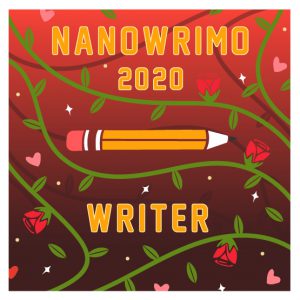Are you preparing for NaNoWriMo (National Novel Writing Month) with us? Time to beef up your story premise by exploring the conflict and antagonist(s).

More on Premise
Remember the premise in the first exercise?
When he’s called in to investigate a hit-and-run accident, expert consultant John Smith discovers the death is intentional. He must find out the victim’s identity before the murderer strikes again.
Let’s look at this another way, based on K.M. Weiland’s formula for developing a “Wow” premise. We have the protagonist, John Smith, in a situation of investigating a hit-and-run-accident. His goal is the find out the victim’s identity, although it is implied that the ultimate goal is to stop the killer.
Now we need to make the premise more complex by adding antagonists. These are the person(s) or thing(s) that get in the way of the protagonist getting his/her/their goal. In the case above, the killer will be an antagonist whose goal is to prevent the protagonist from finding out the victim is. The two are in conflict, causing tension which makes the story more interesting and drives the plot.
Kinds of Conflict
Stories can feature many kinds of conflict. To explore the possibilities, let’s look at a relatable example.
Our protagonist, Melissa, has a goal to write 50,000 words in the month of November because she needs to complete a novel she has already sold or she’ll have to give the money back.
What can go wrong (prevent her from achieving her goal)?
- A freak storm knocks the power out for days.
- Her lovable, but noisy in-laws are forced to move in with her.
- Melissa’s inner critic takes over and she can’t write a word.
- Her computer hard drive crashes on the last day and she loses all her work.
- When her internet service is taken over by the city, the old internet provider sues and freezes service for everyone.
Each example above falls into a general category of conflict (names of categories vary depending on what reference you use).
- Person versus nature
- Person versus person
- Person versus self
- Person versus machine
- Person versus society
Sometimes the protagonist may encounter more than one kind of conflict, such as fighting with a villain (person versus person) while both are in the middle of a forest fire (person versus nature). To make Melissa’s story complex, have all those problems befall her.
The Writing Excuses Podcast has some helpful discussions on the types of conflict in fiction and how to incorporate conflict in your writing.
Have you figured out what type(s) of conflict will drive your story? The type of conflict will determine your choice of antagonist and vice versa.
Exercise: Developing Character of Your Antagonist
If you have decided on a human antagonist, now is a good time to start developing their character. Even if the antagonist doesn’t show up on the page, he/she/they will shape the story in many ways. Having a complex and well-thought-out antagonist is important. Also, the protagonist and antagonist should influence and mirror each other, so develop each with the other in mind.
We already decided on the protagonist’s age, name, appearance, and profession. Now do the same for your antagonist. When you’ve finished, start filling out a character sketch (check this potentially useful Character Sketch Template) for both your antagonist and your protagonist.
Like with your protagonist, sometimes it can help to start with an archetype “stick figure”. Many resources exist, but for example The Page Unbound has a list of 16 villain archetypes. Remember that your antagonist doesn’t have to be a villain or pure evil, and in fact they shouldn’t be. Antagonists have many motivations and when they have done something wrong probably believe they made the best decision based on what they were faced with at the time.
Challenge: See if you can figure out a way that your protagonist and antagonist can be connected somehow.
What’s your antagonist’s name?
Tomorrow: Fleshing out the rest of the cast.
#####
Visit our 30 Day Novel Prep Page for all the links.



